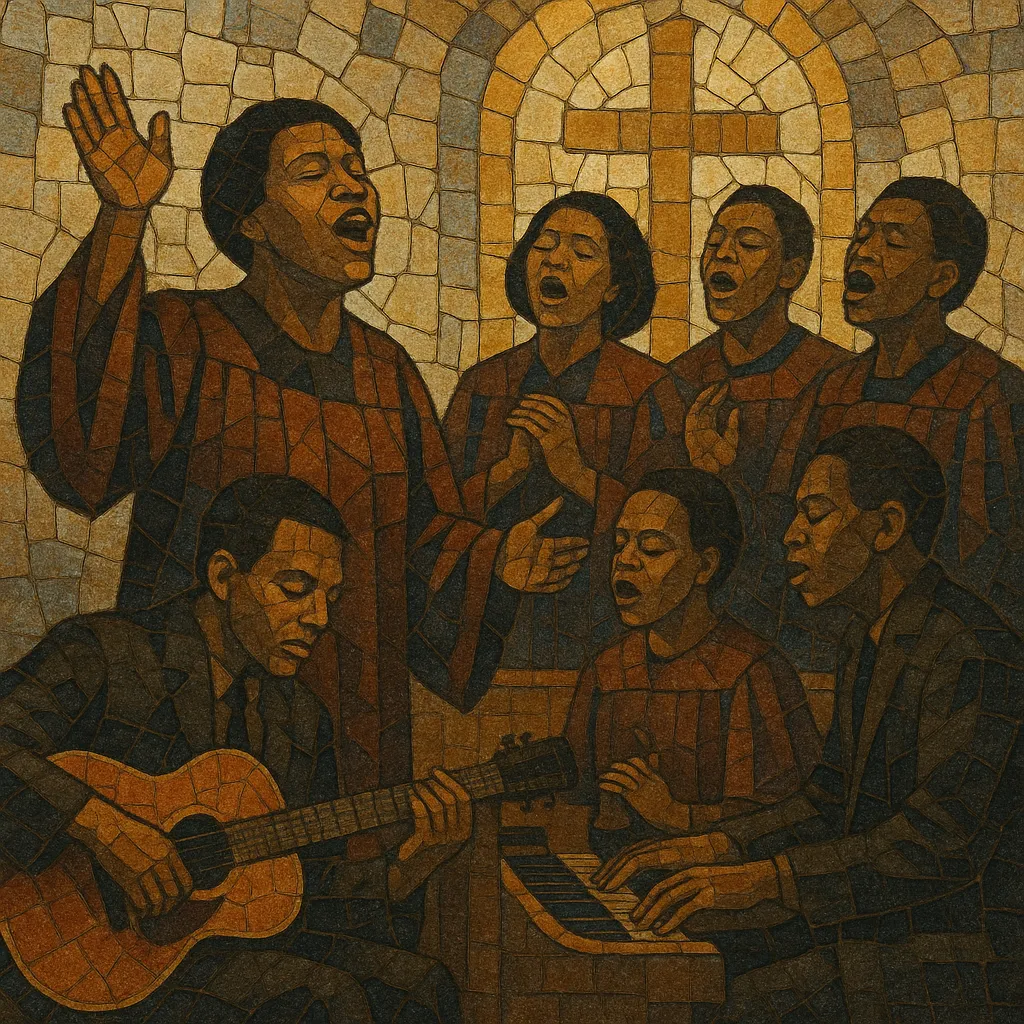Gospel is a family of Christian sacred music that emerged from African‑American church traditions in the United States. It centers the voice, communal participation, and a message of faith, hope, and testimony.
Musically, gospel is characterized by call‑and‑response, powerful lead vocals answered by choirs, rich harmonies, handclaps, and a propulsive backbeat or 12/8 shuffle. Typical ensembles include voice, piano or Hammond organ, drums, bass, and guitar, with occasional horns. Harmonically it blends simple I–IV–V frameworks with blues inflections and sophisticated chord extensions, turnarounds, and modulations that heighten emotional intensity.
The genre encompasses several streams, notably traditional Black gospel, Southern (white) gospel rooted in shape‑note singing, and contemporary/urban gospel that integrates R&B, soul, and hip‑hop. Its sound and spirit have profoundly influenced American popular music—from soul and R&B to rock and roll.
Gospel grew from the spirituals, ring shouts, work songs, and hymn traditions of African‑American worship. Early 20th‑century Holiness‑Pentecostal services encouraged rhythmic accompaniment, clapping, and expressive vocalizing that shaped the gospel aesthetic. Pioneering composer‑preachers like Charles Albert Tindley wrote congregational songs that bridged spirituals and modern gospel. In the 1920s, Thomas A. Dorsey—often called the “Father of Gospel Music”—fused blues harmony and phrasing with sacred lyrics, formalizing the style in Chicago during the Great Migration.
Quartets and powerhouse soloists popularized the music on records and church circuits. Mahalia Jackson’s resonant contralto made gospel an international force, while groups like The Soul Stirrers set a new standard for tight harmonies and expressive leads. Sister Rosetta Tharpe electrified the genre with her guitar work, foreshadowing rock and roll. In parallel, Southern gospel developed through shape‑note singing (e.g., Sacred Harp), family groups, and convention songs.
The Civil Rights era amplified gospel’s social and spiritual role. James Cleveland organized mass choirs and professionalized church music ministries; Edwin Hawkins’s “Oh Happy Day” (1968) crossed into pop charts; Andraé Crouch infused contemporary pop, soul, and jazz elements. Recording technology and larger choirs expanded the genre’s sonic palette.
Kirk Franklin and peers blended gospel with hip‑hop and R&B production, defining urban contemporary gospel. The genre’s influence spread worldwide, inspiring local scenes and hybrids (e.g., gospel house and gospel reggae). Today, gospel thrives across traditional choirs, praise‑and‑worship bands, and studio‑crafted ensembles, maintaining its core of communal singing and spiritually focused lyrics.


